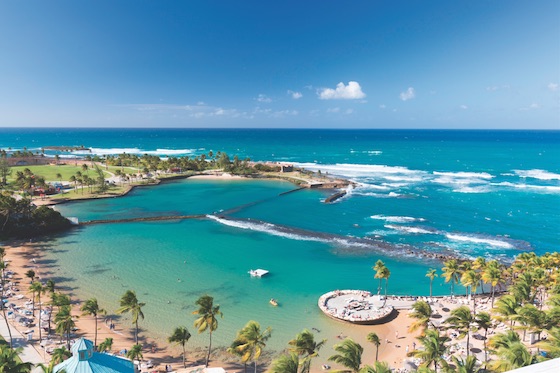Amid Puerto Rico’s US$72 billion debt crisis, developers on the Caribbean island have been weighing the effect of the economic distress on attracting and retaining investment capital for hotel and resort projects.
On June 29, the U.S. Senate passed a much-debated rescue bill that put in place a mechanism to force a compromise between Puerto Rico and its bondholders to resolve the crisis. A day later, President Barack Obama signed the measure into law. But that wasn’t enough to prevent the island from missing a nearly US$800 million debt payment due on July 1. Puerto Rico thus became the first U.S. state or territory to default on paying general obligation bonds since 1933.
Add to the two-and-a-half-year-old crisis the threat posed by the Zika virus, and developers face another potential crisis as travelers, especially leisure and corporate group customers, steer clear of the U.S. commonwealth.
To counter fears of the virus, the island’s convention and visitors bureau has focused on eliminating mosquito breeding grounds and training health professionals, among other steps.
In the meantime, analysts and consultants are cautioning developers and investors not to overreact to the debt problem. “The issue is not whether the financial troubles have had an impact, but whether the media coverage has been fair and balanced,” said Jose Joaquin Villamil, chairman and CEO of Estudios-Technicos, an economic and planning consulting firm, and former chairman of PonceBank. “There is no humanitarian crisis of the scale that some news reports have described.”

Puerto Rico’s worst days may be behind it, says Daniel Lesser, LW Hospitality Advisors, New York. “While the island’s economy has been in recession for a decade, at this point it can hardly get any worse. Consequently, it’s not a matter of if, but when, the island’s solvency problems are finally dealt with,” he said.
Consistent with this, Lesser has not seen a spike recently in single lodging asset sales in Puerto Rico.
Villamil, meanwhile, cited the underlying competitive advantages Puerto Rico continues to enjoy vis-à-vis other Caribbean and Central and South American destinations, regardless of the debt issue. “Chief among them are the frequent airlift from the Northeast U.S., highways and other infrastructure, first-class convention center and, possibly most important, no travel restrictions, meaning passports are not needed,” he said.
The time may actually be right for contrarian investors to scoop up what have become undervalued assets, according to Lesser. “Depending on the investors’ basis in each deal and the anticipated ownership holding period, the bet may very well turn out to be a home run,” he said. “Patient sponsors with successful track records working out bankruptcies and debt restructurings tend to be attracted to troubled opportunities in distressed markets.”
John Paulson, president and CEO of the Paulson & Co. hedge fund, has been one such contrarian, investing a reported US$1.5 billion in mostly lodging assets on the island and mostly from his personal account, starting in late 2013 and lasting—at least so far—until mid-2015.
Paulson’s properties include the St. Regis Bahia Beach Resort, Bahia Beach Resort & Golf Club, both in Rio Grande on the island’s north coast; and Condado Vanderbilt, La Concha Renaissance Hotel & Tower and San Juan Beach Hotel, all in Condado, San Juan. Paulson, who became famous in the 2008 downturn for betting against subprime mortgages at the height of the housing bubble, declined to comment for this story.
Contributed by Bruce Serlen
